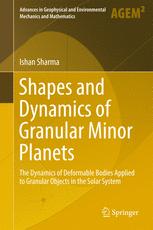

Most ebook files are in PDF format, so you can easily read them using various software such as Foxit Reader or directly on the Google Chrome browser.
Some ebook files are released by publishers in other formats such as .awz, .mobi, .epub, .fb2, etc. You may need to install specific software to read these formats on mobile/PC, such as Calibre.
Please read the tutorial at this link: https://ebookbell.com/faq
We offer FREE conversion to the popular formats you request; however, this may take some time. Therefore, right after payment, please email us, and we will try to provide the service as quickly as possible.
For some exceptional file formats or broken links (if any), please refrain from opening any disputes. Instead, email us first, and we will try to assist within a maximum of 6 hours.
EbookBell Team

4.8
104 reviewsThis book develops a general approach that can be systematically refined to investigate the statics and dynamics of deformable solid bodies. These methods are then employed to small bodies in the Solar System. With several space missions underway and more being planned, interest in our immediate neighbourhood is growing. In this spirit, this book investigates various phenomena encountered in planetary science, including disruptions during planetary fly-bys, equilibrium shapes and stability of small rubble bodies, and spin-driven shape changes.
The flexible procedure proposed here will help readers gain valuable insights into the mechanics of solar system bodies, while at the same time complementing numerical investigations. The technique itself is built upon the virial method successfully employed by Chandrasekhar (1969) to study the equilibrium shapes of spinning fluid objects. However, here Chandrasekhar’s approach is modified in order to study more complex dynamical situations and include objects of different rheologies, e.g., granular aggregates, or “rubble piles”. The book is largely self-contained, though some basic familiarity with continuum mechanics will be beneficial.